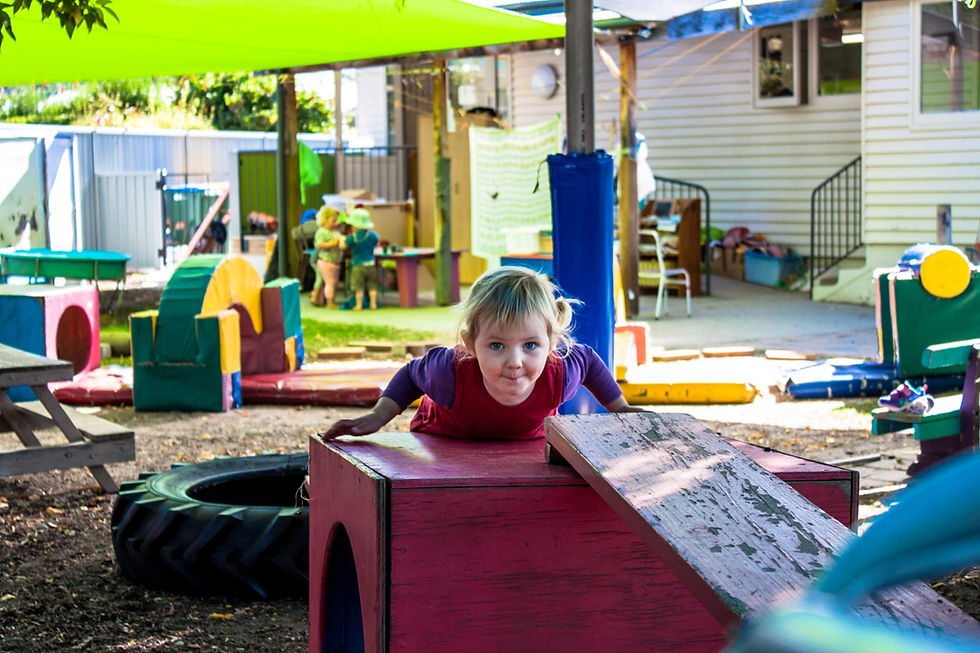


Our Programme
Step inside a typical day at our centre by exploring our Programme page!
You'll find a breakdown of our structured daily timetable, how we tailor our educational approach to suit different age groups (from infants to pre-schoolers), and how we support children through key milestones like the transition to school. Discover the rhythm of learning and fun that makes our centre a vibrant place for your child to grow!

Timetable*
* Approximate only
-
7:45am – 9:30am - Free Play / Learning Experiences
Children explore learning areas of interest; teachers observe and support. -
9:30am – 9:50am - Mat Time / Group Learning
Whole-group gathering; songs, stories, discussions. Curriculum-based learning. -
10:00am – 10:30am - Morning Kai / Snack
Morning kai; social and self-help skills encouraged. -
10:30am – 11:30am - Free Play / Curriculum-based Learning Experiences
Children engage in indoor and outdoor activities; teachers support individual goals. -
11:30am – 11:50am - Mat Time / Group Learning
Reflection, story, or activity related to learning focus. Curriculum-based learning. -
12:00pm – 12:30pm - Lunch
Healthy routines are supported, handwashing, eating etc -
12:45pm – 1:00pm - Free Play / Learning Experiences
Outdoor and indoor play; creative, physical, and social development. -
2:00pm – 2:30pm - Afternoon Tea
Non compulsory afternoon tea -
2:30pm – 4:00pm - Free Play / Learning Experiences
Continued exploration and learning; focused activities or interests. -
4:00pm – 4:30pm - Late Afternoon Snack
Snack -
4:30pm – 5:15pm - Quiet Play / Preparation for Home
Storytime, calm play, and farewells. -
5:15pm - Our Centre Closes.
Mixed Age
We believe that children benefit from learning in a family-oriented, mixed-age environment. Our kaiako use intentional teaching strategies to provide a secure, stimulating, and challenging setting for all learners. Each child has a specific learning goal tailored to their needs, that will change over time, which aligns with Te Whāriki - Te Ara Whānui, Aotearoa New Zealand’s Early Childhood Curriculum. These goals are informed by whānau aspirations, the child’s voice, and teacher observations.
Strong relationships within our centre’s whānau create a supportive atmosphere where older children care for and mentor younger children, while younger children look up to their older peers as role models. Developing confidence and competence is central to our philosophy, and learning is embedded in the culture of our centre.
Infants & Toddlers
Strong relationships between parents, children, and kaiako form the foundation of our core philosophy at Kopuwai Early Learning Centre. This is particularly important for our infants and toddlers. We believe that routines provide the basis of our infants’ curriculum and support exploration for our toddlers. These routines are valued opportunities to extend and enrich learning.
Our key teacher approach allows each child to seek comfort and guidance from a specific teacher, fostering a sense of safety and security. Children have the choice of when, and for how long, they need their key teacher’s support. By combining high-quality relationships with attentive responsiveness to each child’s individual rhythm, we create a truly child-centred environment that nurtures learning, confidence, and wellbeing.
Two, Three and Four Year Olds
Our learning environment provides all ākonga with a high-quality programme designed to extend individual learning. Kaiako observe and identify children’s interests, using them to support the development of specific skills, knowledge, attitudes, and dispositions.
Emergent Literacy and Numeracy are integrated throughout our daily programme, and children experience a language - and text-rich environment. At Kopuwai Early Learning Centre, we place a strong emphasis on self-help, problem-solving, curiosity, creativity, and emotional resilience. We also value our connection to the wider community and actively participate in local and national events, fostering a sense of belonging and engagement beyond the centre.

Transition to School
At our centre, children’s learning is guided by Te Whāriki, the Early Childhood Curriculum of Aotearoa New Zealand. As children transition to school, they move into The New Zealand Curriculum, which builds on the foundations of Te Whāriki.
Both curriculums share a strong connection — they recognise that learning happens in partnership between what the environment offers and the knowledge and experiences children bring with them.
Just as Te Whāriki weaves together principles and strands to support the whole child, The New Zealand Curriculum also weaves key competencies and learning areas to support each learner. This close alignment ensures a smooth and meaningful transition for tamariki as they continue their learning journey from early childhood into school.
At our centre, we support a smooth and confident transition to school for every child. Our programme provides meaningful experiences that build the skills, confidence, and independence tamariki need for success in their next learning environment.
We work closely with local schools and whānau to ensure each child’s journey is positive and well supported. Through communication, shared planning, and gradual preparation, we help tamariki feel ready, familiar, and excited for their next steps in learning.
Day-to-Day Resources
Ketes
Located at the main door entrance to the Centre are the children’s ketes. Every child/family has one with their name on it. The ketes are a way of sending your child’s artwork home or communication from the Centre, so please try to check your child’s kete on a regular basis.


